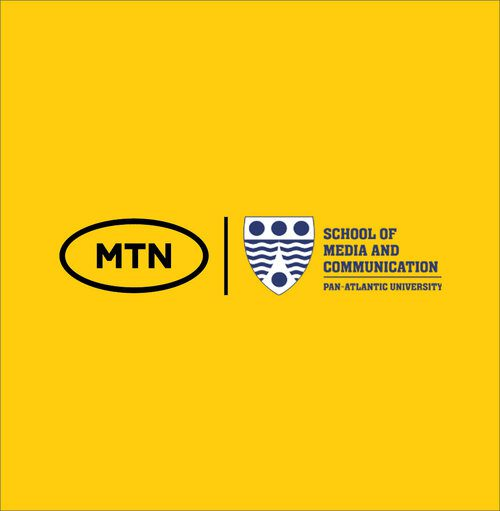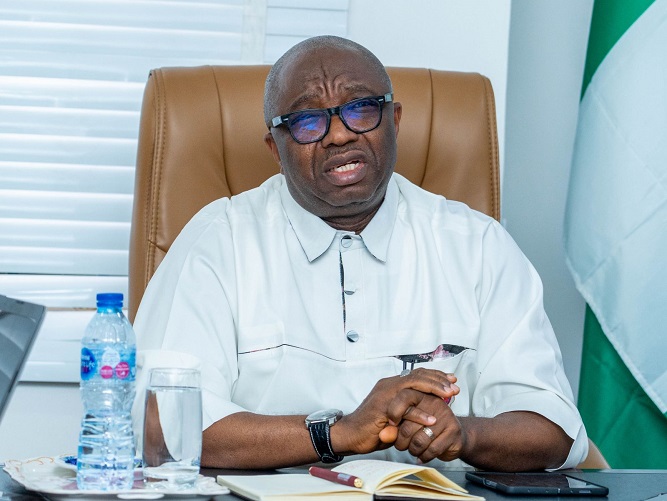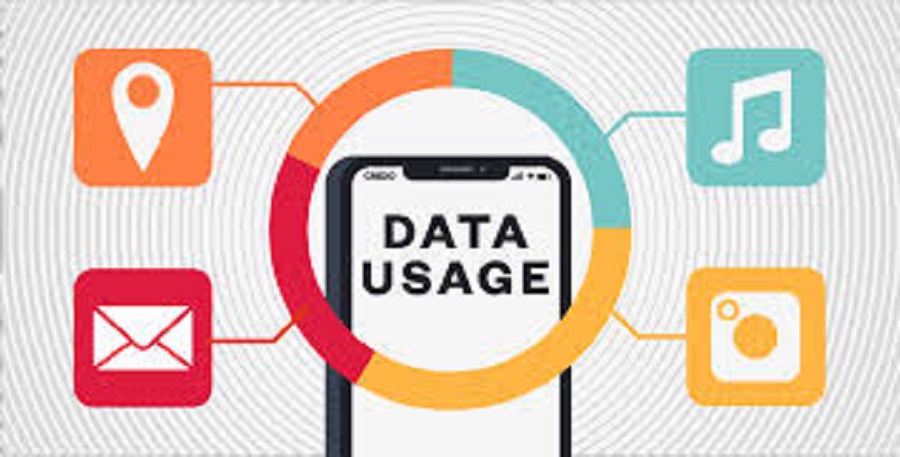Telecom
Consumers Spending on ICT Market to Hit $4 Trillion in 2018 – IDC

Worldwide Semiannual IT Spending Guide said that worldwide spending on information and communications technology (ICT) will be nearly $4.0 trillion in 2018, according to new data from the Industry and Company Size from International Data Corporation (IDC).
The explosive growth of smartphones in recent years means that consumer spending will account for the largest proportion of that total, but growth will be driven by enterprise spending on cloud, software and infrastructure related to 3rd Platform solutions.
The consumer market will account for more than $1.5 trillion in ICT spending in 2018 and will deliver more than one third of all worldwide spending throughout the forecast.
Consumer spending will also experience the slowest growth over the forecast period with a CAGR of 1.2%.
Roughly 80% of consumer spending will go to devices and mobile telecom services.
Banking, discrete manufacturing, telecommunications, and professional services will be the four largest industries for ICT spending in 2018 at more than $900 billion combined.
While all four industries will invest heavily in applications, infrastructure, outsourcing, and telecom services, spending levels will vary depending on industry needs.
For example, banking will invest the most in IT outsourcing and project-oriented outsourcing ($115 billion combined) while telecommunications spending will be led by infrastructure purchases ($85 billion).
Professional services and banking will experience the fastest growth in ICT spending with five-year CAGRs or 5.9% and 5.2%, respectively.
The United States will see $1.3 trillion in ICT spending in 2018 making it the largest geographic market this year and throughout the forecast with spending expected to grow at a CAGR of 3.6%.
China will be the second largest market for ICT spending at $499 billion this year with solid growth (5.2% CAGR) forecast through 2021.
Japan, the UK, and Germany will round out the top five countries for ICT spending in 2018.
The countries that will experience the fastest ICT spending growth over the 2016-2021 forecast period are the Philippines (7.5% CAGR), India (7.0% CAGR), and Peru (6.7% CAGR).
Jessica Goepfert, program director, Customer Insights & Analysis, said “The growth of technology spending in the U.S. professional services industry is propelled by the tech-savvy firms that comprise it. Think Facebook, Google, Microsoft, and Uber, to name a few.
“These companies wholeheartedly embrace technology as a key enabler to their business strategies and service offerings, and are often the first to test drive new innovations as they strive to stay ahead of the rapidly evolving technology market.
“Meanwhile, banks and retailers share the common desire to deliver a delightful, cohesive, channel-agnostic customer experience.
“These initiatives are enabled by technology investments to help organizations unite their physical and online worlds.”
In terms of company size, the small office category (businesses with 1-9 employees) will account for 7% all ICT spending throughout the forecast period.
Most of this spending (around $100 billion per year) will go toward fixed and mobile telecom services, while devices will also be a significant spending category.
On the other end of the spectrum, very large businesses (more than 1,000 employees) will account for more than 50% of all ICT spending throughout the forecast.
These businesses will focus the majority of their spending on IT outsourcing, project-oriented outsourcing, applications, and infrastructure as they pursue their digital transformation strategy.
The spending patterns for small businesses (10-99 employees) will closely resemble those of the small office category with slightly more spending going toward applications and outsourcing.
Medium (100-499 employees) and large (500-999 employees) businesses will experience more balanced spending across all technology categories.
Spending on information technology (IT) will reach $2.16 trillion this year, led by business and consumer spending on devices, applications, IT outsourcing, and project-oriented outsourcing, including application development and system and network implementation.
In addition, more than $300 billion will be spent on business process outsourcing and business consulting services this year.
Telecommunications spending is forecast to be $1.5 trillion this year with 95% of the total going to fixed and mobile telecom services.
Mobile phones will be the largest segment of technology spending at nearly $500 billion in 2018, followed by mobile data and mobile voice at more than $400 billion each.
Stephen Minton, research vice president, Customer Insights & Analysis.said “Spending for telecom services is largely dominated by consumers, but some industries have emerged as rapid adopters of fixed and mobile data services over the past few years.
“In Asia, special projects and initiatives have helped to boost fixed broadband adoption in the education sector.
“In the U.S., the healthcare industry is a major source of fixed-line telecom spending, while transportation firms in Canada and Japan have invested aggressively in mobile broadband solutions.
“Meanwhile, consumers in many emerging markets continue to leapfrog fixed broadband and go straight to mobile data services, which is changing the entire landscape for how to connect with end-users in these countries.”
Telecom
How MIP Is Making a Difference in The Media Landscape

MTN Media Innovation Program (MIP), a six-month fully-funded certificate fellowship designed for media professionals, is redefining journalism and content creation in Nigeria.

Now in its fourth year, MIP, launched by MTN Nigeria in partnership with the School of Media and Communication (SMC), Pan-Atlantic University, is empowering journalists, broadcasters, and content creators with the tools to adapt, innovate, and thrive in today’s challenging media landscape.
Despite promising forecast that the market value of the Nigerian entertainment and media industry will grow from US$9.0bn in 2023 to US$13.6bn in 2028, the media sector has since grappled with issues such as limited access to training, financial instability, and the rapid decline of traditional revenue models. With digital platforms disrupting how news is consumed and monetised, journalists and media owners must rethink their approach.
MIP provides a structured learning environment where media professionals gain first-hand exposure to new industry trends, digital transformation, and the intersection of media and ICT. From data journalism to audience engagement strategies, participants leave the program with actionable skills that are shaping the future of storytelling in Nigeria.
A standout feature of MIP is its international study visit to South Africa, where fellows engage with leading media institutions, visit MTN Group’s headquarters, and participate in hands-on training sessions at the University of Johannesburg. This global exposure provides invaluable insights into how media practitioners in other markets are leveraging technology and innovation to stay ahead.
For many participants, this has been a career-defining experience. Juliet Tontoye, Vice-President, MIP Cohort 3, describes the program as ‘a turning point.’ “When we share our experiences with our colleagues at our respective media houses, we realize that the program’s benefits and impact are easier to experience than explain. In the past three months, MIP has been such an eye-opening journey. It’s a fellowship every media professional needs to experience. MTN has been such a wonderful host and we know this costs millions of Naira. However, we believe it will have a profound impact on our colleagues.”
Beyond individual impact, MIP is helping reshape the media industry by fostering collaboration and leadership. By bridging the gap between traditional journalism and digital innovation, the program ensures that fellows graduate not just as better storytellers, but as industry disruptors with a mission to create lasting change. The program’s 60 alumni, now spread across Nigeria’s top media organisations, are applying their knowledge to revolutionise newsrooms, create digital-first content strategies, and introduce sustainable business models.
According to Tobechukwu Okigbo, Chief Corporate Services & Sustainability Officer, MTN Nigeria: “When we launched MIP in 2022, our goal was to enhance media professionals’ reporting capabilities and deepen their understanding of the technology sector, empowering them to become true media innovators. Seeing the impact of the programme over the past three years has been both inspiring and humbling. We are proud to continue this initiative and invite all eligible media professionals and content creators to seize this opportunity by applying for the fourth cohort.”
Similarly, the Dean of the School of Media and Communication, Pan-Atlantic University, stated: “SMC will leverage its extensive experience in training media professionals to equip this next cohort. And we will do this with our usual emphasis on creativity and ethics.”
With over 60 fellows trained since its inception in 2022, MIP is building a network of media advocates who are championing ethical reporting, storytelling innovation, and the smart use of technology in journalism.
MTN Nigeria has invested over NGN 300 Million in building Nigeria’s media industry in the past three years through its partnership with PAU.
As applications open for the 2025 cohort, the program continues to attract top-tier talent eager to take their careers to the next level and contribute to the transformation of Nigerian media.
For journalists, broadcasters, and content creators looking to future-proof their careers, the MTN Media Innovation Program is more than just a fellowship—it is a movement that is reshaping the industry, one fellow at a time.
Interested journalists, bloggers, and content creators can apply for the MIP 2025 at https://bit.ly/MTN_MIP2025.
Telecom
Nigeria Heads Anglophone Data Protection Committee

Dr. Vincent Olatunji, Chief Executive Officer of the Nigeria Data Protection Commission, has been appointed as the Chair of the Anglophone Countries Committee of the Network of Africa Data Protection Authorities (NADPA).

The appointment, confirmed on April 2, underscores Nigeria’s leadership in Africa’s data privacy efforts. Speaking after his confirmation, Olatunji urged members to prioritize collective efforts in protecting the privacy rights of over 1.4 billion Africans.
Meanwhile, Nigeria will host the 2025 NADPA Annual General Meeting and Conference in May. Themed “Balancing Innovation in Africa: Data Protection and Privacy in Emerging Technologies,” the event will showcase Nigeria’s strides in digital economy development under President Bola Ahmed Tinubu’s administration.
Telecom
NCC Asks Consumers to Monitor Data Usage to Authenticate Consumption

Nigerian Communications Commission (NCC) has charged the over 174 million telecoms subscribers in the country to constantly monitor their data usage to authenticate their consumption level.

This follows concerns being raised by telecoms consumers about the rapidity of data depletion on their devices.
The Commission particularly enjoined the consumers to always contact their service providers to make requests for cases of discrepancies noted in their data usage.
While the consumers are expected to contact their service providers to request for their usage history/statement where inconsistency exists in their data usage as first step, the Commission said they may also escalate such issues to the Commission through its toll-free Number 622 and social media platforms, especially if their requests are not satisfactorily handled.
The Commission, which also made some clarifications regarding the concerns being raised by the consumers around data usage, said the need to inform the consumers on their concerns is part of its commitment to protect and appropriately inform and educate the telecom consumer on industry issues.
Making further clarifications around data speed and usage, the Commission said data speed is the speed at which data is transferred between two devices, measured in megabits per second (Mbps or mbps), stressing that given the spread of Internet services and the immense investment in the sector, data rates have continued to increase and users may be unaware of how to measure data speed.
The telecoms regulator explained further that websites such as www.fast.com also provide an easy way for consumers to measure Internet speed on any device at any location.
“The higher the data speed, the quicker pages load-downloads and uploads-occur and expectedly, the quicker data bundles are exhausted. So, as telecom consumers are able to do more on devices in less time, some consumers’ devices & network service providers make it possible to limit data speed to help users manage data usage better.
“In any case, most devices now include functions to measure data used by devices and it is imperative that users monitor same to authenticate data usage, such as applications left running on devices. Therefore, where discrepancies occur users may contact their service provider to request for their usage history/statement. If request is not dealt with satisfactorily then, users can contact NCC by calling 622 or engage the Commission via its social media platforms”.
It added that the data usage experience is a function of location, network equipment and users connected in a particular location.

 Broadcasting3 days ago
Broadcasting3 days agoDStv Revenue Plunges as MultiChoice Loses Nearly 4m Subscribers

 News2 days ago
News2 days agoNIPSS Projects Petrol Prices to Hit ₦750/Litre Before Year’s End!

 Telecom3 days ago
Telecom3 days agoNCC Asks Consumers to Monitor Data Usage to Authenticate Consumption

 Telecom3 days ago
Telecom3 days agoPhone Theft: AMCODET Urges Mandatory Registration @ Point of Purchase

 News3 days ago
News3 days agoQuestions Over House of Reps Threat to Arrest NIMC DG

 News3 days ago
News3 days agoTikTok Sale Deal Expected Before April 5 Deadline – Trump

 E-Financial3 days ago
E-Financial3 days agoFidelity Bank Records a 210.0% Growth in PBT to N385.2bn

 E-Financial2 days ago
E-Financial2 days agoFidelity Bank Reports N385.2Bn Pre-Tax Profit for 2024



























